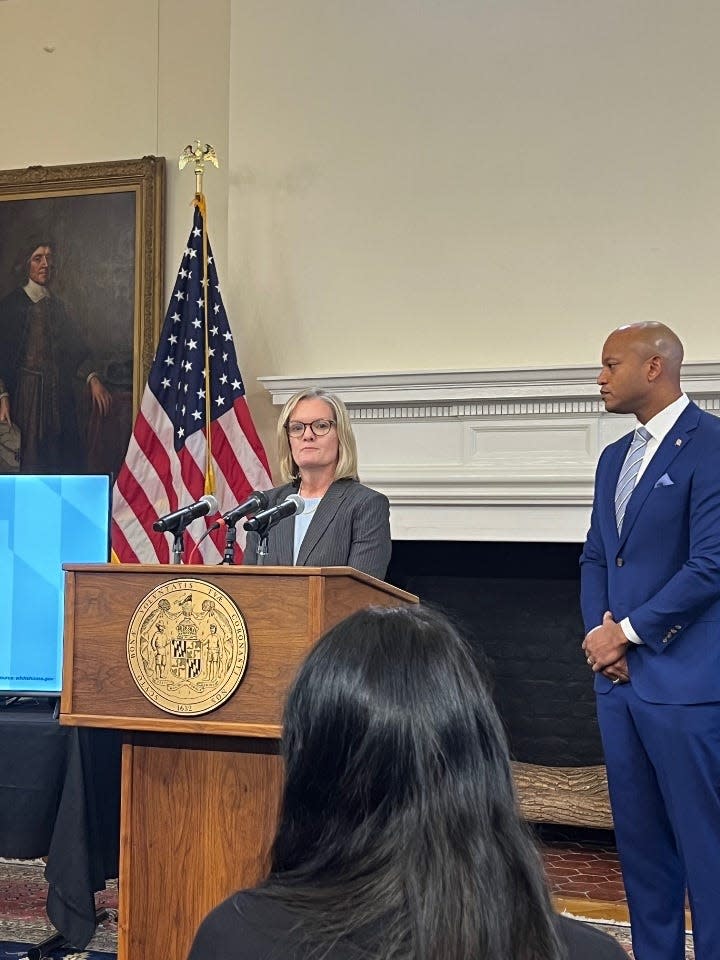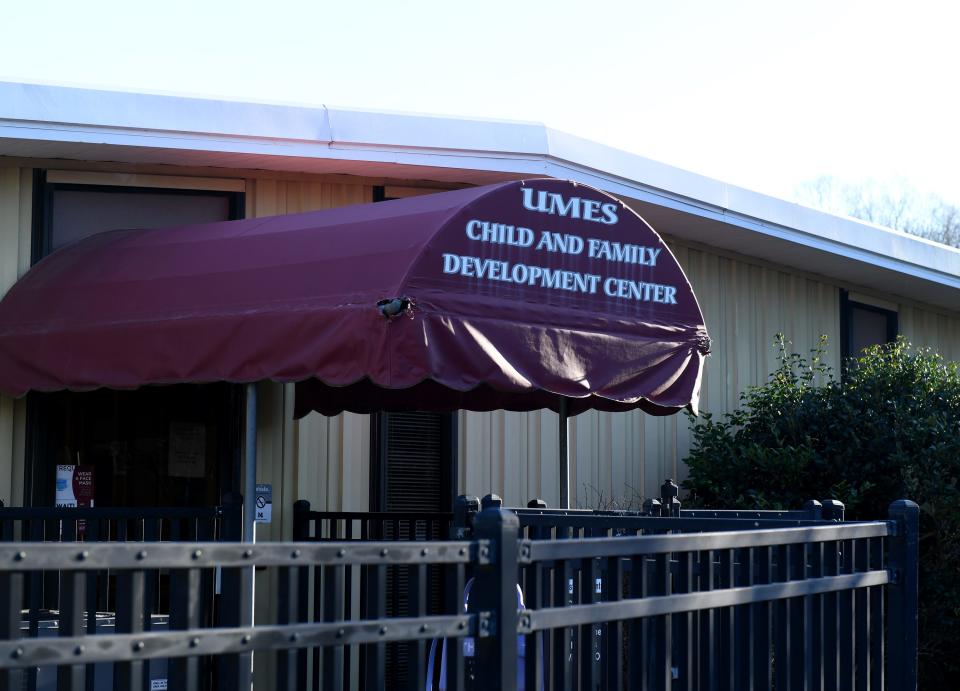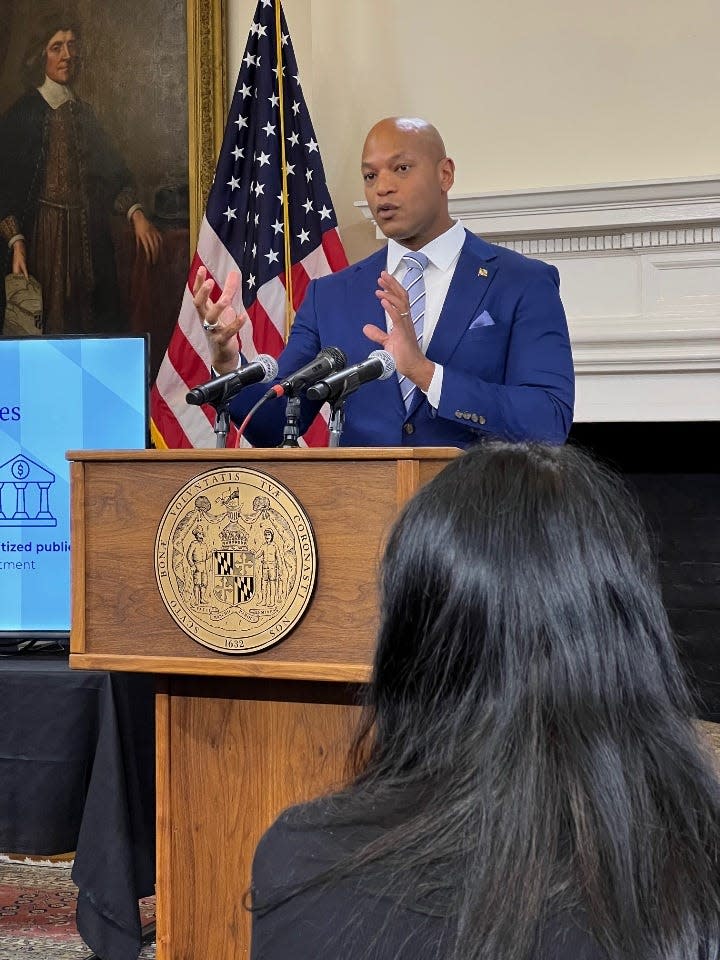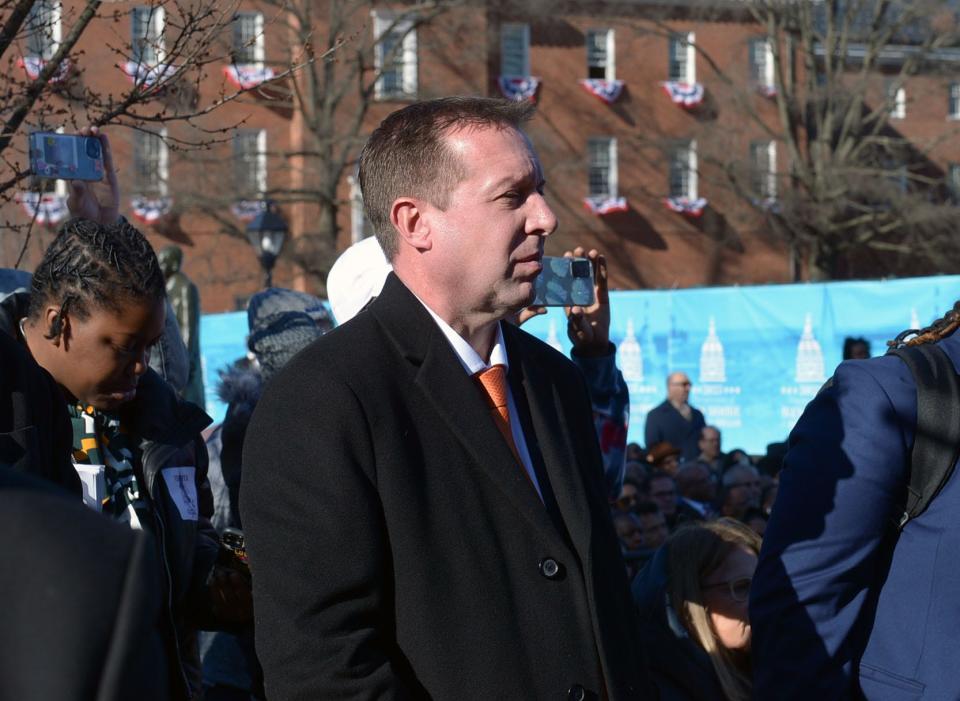Moore's Maryland budget boosts child care, education, without raising taxes. What to know.
Looking at the topline number between last year’s state budget proposal and this year’s, the figure is the same, $63.1 billion. But beneath the surface, Gov. Wes Moore’s plan has differences, giving some members of the Legislature pause.
“The General Assembly must proceed with caution in these uncertain fiscal times,” said Senate Minority Leader Steve Hershey, an upper Eastern Shore Republican, in a statement, on Wednesday, hours after Moore and Helene Grady, secretary of the Department of Budget and Management, provided an overview of the more than 1,300-page document to members of the State House press corps.
As Moore made clear both in his public remarks and in a subsequent news release from his office, the multi-billion dollar budget plan was compiled "all without raising taxes."
Child care gets millions in additional funding, under proposal

One of those differences from last year to this year is $270 million additional dollars from the General Fund for the Child Care Scholarship program, which supports at least 16,000 Maryland children and their families, subsidizing everything from infant care to afterschool programs to some summer camps. The fiscal 2024 budget passed by the Maryland General Assembly last year included $58.5 million in general funds and over $100 million in federal funds for the scholarship program.
More: In Ocean City address, Moore declares 'new season of challenge' for Maryland economy
Moore pitched the child care funding increase as a way to bring more women into the workforce and strengthen the state’s economy.
“Access to child care doesn’t just affect your child and your family, it changes the trajectory of our state’s fiscal health,” said Moore, during the Jan. 17 budget overview at the State House in Annapolis. “Earlier this month, the comptroller released a report highlighting that as child care costs increase, overall female employment decreases by 5 percent.”

To a crowd largely consisting of cabinet secretaries and administration officials, Moore called the funding boost “the largest single year investment in child care in our state’s history,” a line met with applause by the friendly audience.
Maryland's public schools receive more funding under plan
The budget proposal also fully funds the Blueprint for Maryland’s Future law, putting $9.2 billion into the state’s public K-12 schools. The total represents a $461 million or 5.3% increase from the current fiscal year.

More: As Maryland's school plan begins, 'childcare deserts' a persistent problem
The proposal also increases spending at the Department of Public Safety and Correctional Services, which operates the state’s prisons, by more than $76 million. That department’s sum, about $1.6 billion, represents a 4.9% increase from the current fiscal year.
Still, under the proposal, the state has 9.4% of General Fund revenues in the Rainy Day Fund, a balance of $2.34 billion, to “weather whatever uncertainties lie ahead,” listing federal government shutdowns or a recession as potentialities. The state’s structural deficit under the plan comes in at $502 million, an amount that falls under the total recommended by the Spending Affordability Committee last month.
The governor again noted during the budget overview on Wednesday something he said in August in Ocean City: that 17 of the last 20 state budgets have required cuts to stay balanced. In that sense, about the state’s fiscal challenges, there was agreement between Moore, a Democrat, and the top Republican member on the Senate Budget and Taxation Committee.

“Long-term, spending is still outpacing revenues and this budget does not identify a solution to this ongoing dilemma,” said state Sen. Paul Corderman, R-Washington/Frederick, in a statement. “We must address these expensive mandates from the past and refrain from adding new ones that will further weigh down the budget.”
Dwight A. Weingarten is an investigative reporter, covering the Maryland State House and state issues. He can be reached at dweingarten@gannett.com or on Twitter at @DwightWeingart2.
This article originally appeared on Salisbury Daily Times: Md. Gov. Moore budget comes in at $63.1 billion with boost for child care

